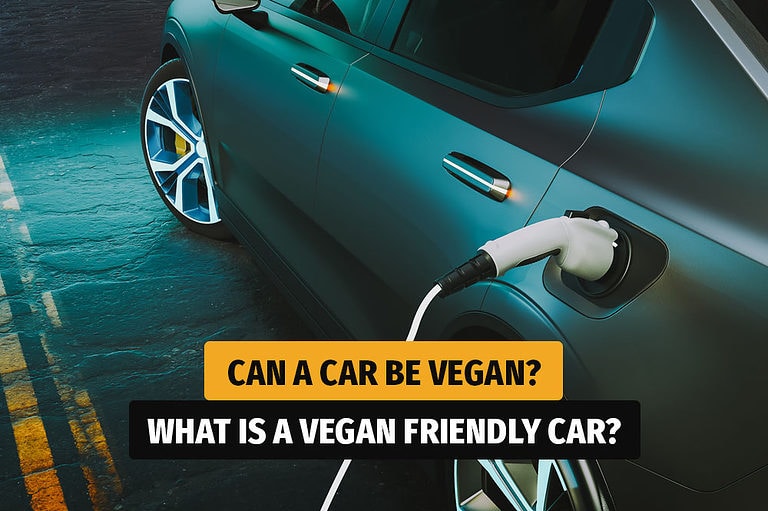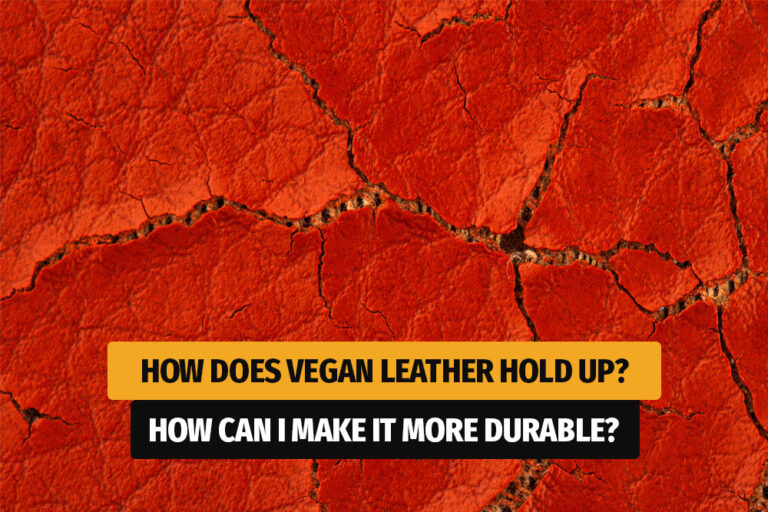
You’ve probably stared at that sleek vegan leather jacket or purse and wondered if it’ll survive longer than your last relationship. The good news is that most people get decent mileage out of their animal-free accessories, but the bad news is that they won’t become family heirlooms.
Vegan leather typically lasts between 2 to 5 years with proper care, while high-quality versions can push closer to 6 years if you treat them right. Compare that to genuine leather’s 10-20+ year lifespan, and you might feel like you’re getting the short end of the synthetic stick. But before you panic about your favorite faux leather boots falling apart next week, there’s more to this durability story.
The real kicker is that not all vegan leather is created equal. Some types will crack faster than your knuckles in winter, while others might surprise you with their staying power. Your daily habits, the weather you face, and even how you store your stuff can make or break your vegan leather’s lifespan.
Expected Lifespan Compared to Genuine Leather
Vegan leather typically lasts 2 to 10 years depending on the material type and quality, while genuine leather can last 20+ years. Your care routine, usage patterns, and environmental conditions play major roles in determining whether your vegan leather items survive or surrender to the fashion graveyard.
Let’s be honest – vegan leather isn’t winning any longevity contests against genuine leather. Your typical PU (polyurethane) vegan leather items will give you about 2-5 years of decent service before they start looking like they’ve been through a paper shredder.
PVC vegan leather does slightly better at 5-10 years, though it might start cracking like a bad dad joke. The real overachiever in the vegan leather world is cork leather, which can actually go toe-to-toe with genuine leather at 10+ years of use.
Meanwhile, genuine leather sits smugly in the corner lasting 20+ years with proper care. Full-grain leather can practically outlive your mortgage. Here’s the reality check:
| Leather Type | Lifespan | Notes |
| PU Vegan Leather | 2-5 years | Prone to peeling and cracking |
| PVC Vegan Leather | 5-10 years | Better durability but still limited |
| Cork Leather | 10+ years | Matches genuine leather performance |
| Genuine Leather | 20+ years | The gold standard for longevity |
Factors Influencing Longevity
The quality of materials in your vegan leather products makes the difference between “looks great for years” and “disaster after six months.” Higher-quality vegan leathers use better adhesives and coatings that won’t abandon ship at the first sign of use.
Manufacturing quality matters too. Well-crafted items with solid stitching and attention to detail will outlast mass-produced bargain finds every time.
Environmental conditions can turn your vegan leather into a science experiment. Sunlight, humidity, and extreme temperatures are like kryptonite to synthetic materials. That bag you left in your hot car? It’s probably plotting its revenge through premature cracking.
Storage plays a bigger role than you might think. Stuff your bags with tissue paper and store them properly – your future self will thank you when they don’t look like deflated balloons.
Wear and Tear in Everyday Use
Your daily habits determine whether your vegan leather items age gracefully or fall apart dramatically. Items you use constantly, like wallets and everyday bags, will show wear faster than that fancy jacket you only wear for special occasions.
Overloading bags is like asking them to commit material suicide. Those seams weren’t designed to handle your entire life’s belongings.
Regular cleaning with mild soap and a soft cloth prevents dirt buildup that can break down the material over time. Think of it as basic maintenance – ignore it, and your vegan leather will definitely let you know through visible deterioration.
Rotating your pieces gives each item a break from constant use. If you have multiple vegan leather items, don’t play favorites – spread the wear around and extend everyone’s lifespan.

Types of Vegan Leather and Their Durability
Different types of vegan leather have wildly different lifespans, ranging from 2 to 20 years depending on what they’re made from. Your choice between synthetic options like PU and PVC versus plant-based materials like cactus or mushroom leather will determine whether your investment lasts a few years or potentially decades.
Synthetic Vegan Leather: PU, PVC, and the Pleather Parade
Polyurethane (PU) and polyvinyl chloride (PVC) are the most common synthetic vegan leather options you’ll find. These materials typically last 2 to 5 years with proper care.
PU leather tends to be softer and more flexible than PVC. It’s often used in bags and shoes because it feels closer to real leather. However, it can start cracking and peeling after a few years of regular use.
PVC is more durable but stiffer. It can handle 5 to 10 years before showing serious wear. The downside? It doesn’t breathe well and can feel plastic-like.
Both materials struggle with sun exposure and extreme temperatures. Your synthetic leather jacket might look great initially, but don’t expect it to become a family heirloom.
Quality matters significantly with synthetic options. Cheap PU leather from fast fashion brands might barely survive a year, while higher-quality versions can reach that 5-year mark.
Plant-Based Options: Cactus, Piñatex, and Mushroom Madness
Plant-based vegan leather is where things get interesting. Cork leather can last 10+ years, rivaling genuine leather in durability. It’s naturally water-resistant and actually improves with age.
Piñatex, made from pineapple leaves, is relatively new but shows promise. Early reports suggest 2 to 4 years of daily wear for shoes and bags. It’s still being tested for long-term durability.
Cactus leather has impressed testers with its flexibility and strength. While concrete data is limited, initial results suggest it could last 3 to 6 years with proper care.
Mushroom leather (mycelium-based) is the newest player. Some versions claim to match traditional leather’s durability, but real-world testing is ongoing.
These plant-based materials often cost more upfront but offer better environmental credentials. Your conscience will feel better, even if your wallet feels lighter.
Quality Materials and Sustainable Alternatives
The manufacturing process dramatically affects durability regardless of base material. Well-crafted items with quality stitching and hardware outlast mass-produced alternatives.
Look for these quality indicators:
- Reinforced seams and edges
- High-quality adhesives and coatings
- Thick, consistent material throughout
- Durable hardware (zippers, buckles, snaps)
Sustainable alternatives often prioritize longevity over quick profits. Brands focusing on environmental responsibility typically use better materials and construction methods.
Your usage patterns matter too. A wallet you use daily will wear faster than an occasional-use handbag. Rotating between multiple items extends each piece’s lifespan significantly.
The sweet spot combines quality materials with reasonable expectations. Don’t expect $20 synthetic leather boots to last as long as $200 cork leather ones.




